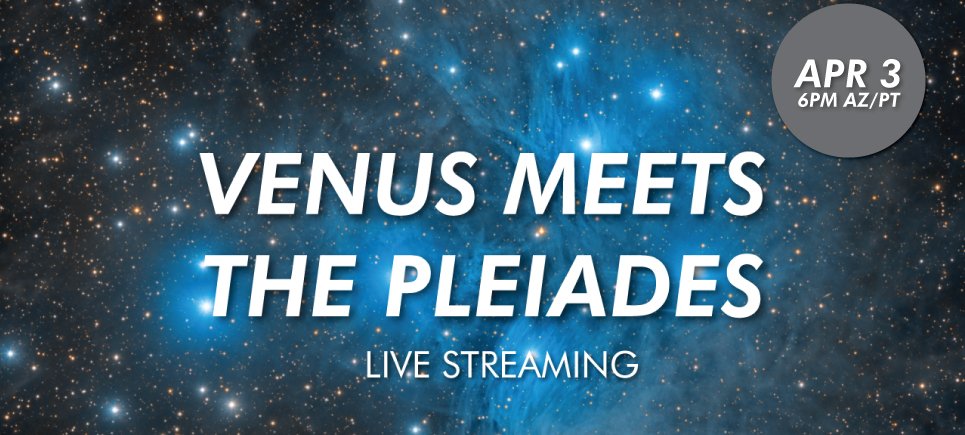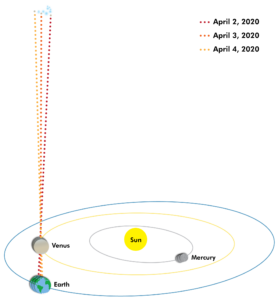
By Madison Mooney
On April 2, 3, and 4, the planet Venus will pass very close by the Pleiades (M45), a beautiful star cluster often referred to as “the Seven Sisters.”
What is a conjunction?
As planets in our solar system orbit the Sun, they appear to gradually move across the sky. Stars and other objects outside of our solar system are so far away that they don’t appear to move at all from night to night. A conjunction occurs when a planet’s path moves it to a spot that makes it appear close to another planet or celestial object. Of course, this does not mean that the objects are actually close to each other in space. In the upcoming conjunction between Venus and the Pleiades, the two objects will appear to be almost touching in the night sky—but in reality, the Pleiades will be about 400 lightyears (or 4 quadrillion km) away from Venus.
When is the conjunction of Venus and the Pleiades?
The conjunction of Venus and the Pleiades star cluster will occur on April 2, 3, and 4, 2020. Venus will be directly in the line of sight of the Pleiades on April 3rd, appearing to be inside the star cluster, and it will be exceptionally close on April 2nd and 4th as well. The conjunction will be visible in the sky those nights from shortly after sunset until about 9:30 pm. Though a conjunction between Venus and the Pleiades occurs every year, the most visually spectacular ones only come in early April every 8 years.
What’s the best way to view the conjunction of Venus and the Pleiades?
This event can be viewed with the naked eye, binoculars, or a wide-field telescope. Small telescopes will have an advantage over large ones in this case, because they can usually see a wider area of the sky. If you use a telescope, make sure to put on an eyepiece with a long focal length (i.e. a larger number on the side of the eyepiece), which results in a lower magnification, in order to see a wider field of view. Venus will be the brightest object in the sky other than the Moon. The Pleiades will be right next to Venus for the moment, but can also be found by extending the line of Orion’s Belt to the right (west), and following that imaginary line past the bright red star Aldebaran to the Pleiades.